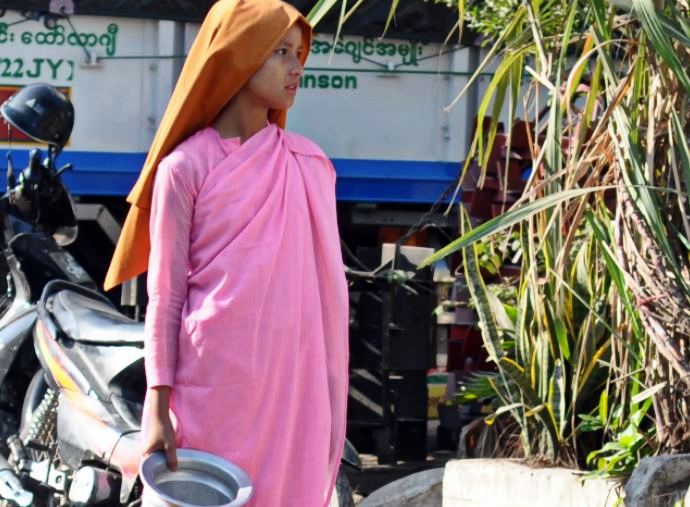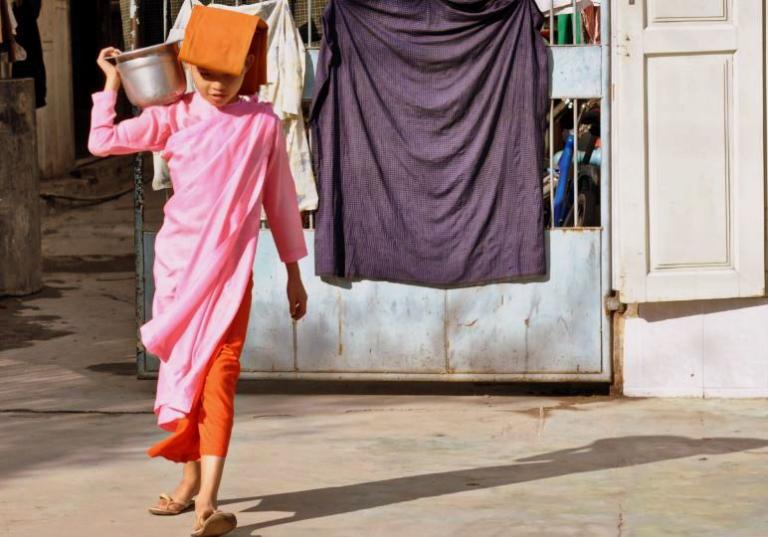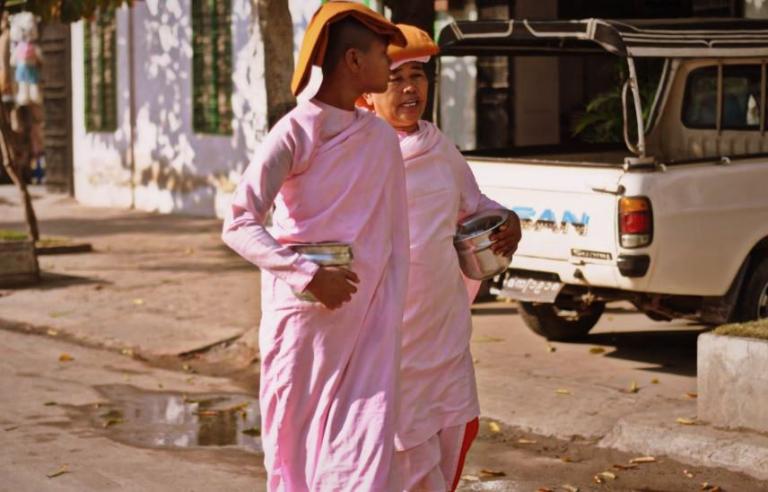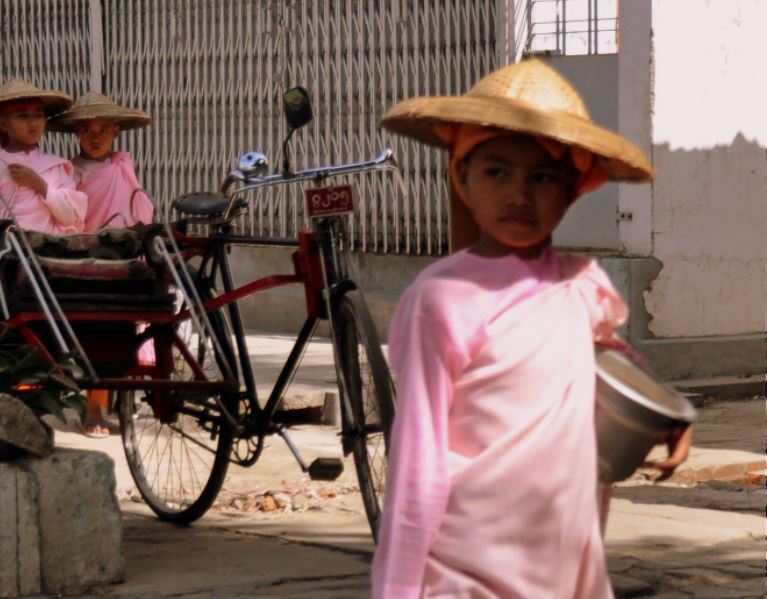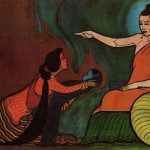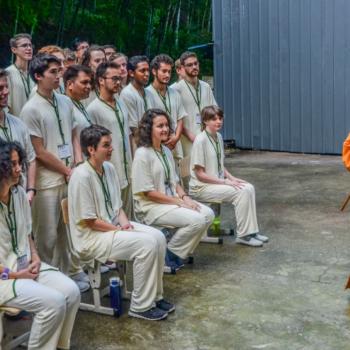The NY Times recently posted a video taking us briefly inside the world of female monastic life in contemporary Burma. Have a look:
They report that, “Enrollment is rising at the Aung Thawada Nunnery School on the northern border of Yangon. The nuns, whose ages range from 9 to 94, join for a variety of reasons, including to escape poverty or abuse.”
It was great to see that the reporter, Chelsi Moy, is a young woman from my home town of Helena, Montana and I even remember her interviewing me about 10 years ago for a story about our national Ethics Bowl team. Small world.
My first real exposure to Burma came through two wonderful venerables, Molini and Dhamma Vijaya. Ven Molini (below, left) is from Burma while Ven. Dhamma Vijaya is from Nepal, and both are ordained in the Theravadin tradition. They reside in Nepal where they run Dhamma Moli, which saves young girls from slavery and/or forced underage marriages. They also travel the world, including regular stops in the US, India, and Burma, offering teachings.
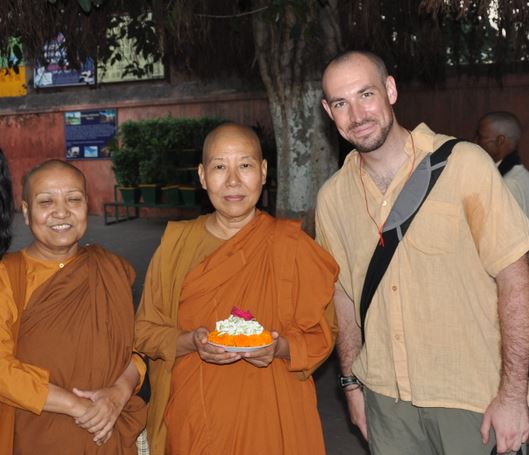
After my time spent in India teaching, I planned to visit Burma – nudged on by enthusiastic encouragement by many people in India including coworkers and these two. I was supposed to meet with Ven. Dhamma Vijaya in Rangoon (Yangon), but I wasn’t able to connect with her in the end, leaving me free to follow my guide book and the whims of myself and fellow travelers.
In my 17 days in Burma I didn’t see a lot of nuns. I think I saw a long line of them doing alms rounds in Rangoon once, but otherwise only encountered a handful in my journeys around Mandalay. Here are a few photos I managed to snap along the way:
The term “nun” may be controversial, as Stanley Tambhiah wrote some 3o years ago: “In the countries of Theravada Buddhism, there is no order of nuns (bhikkhuni) left, the order having died out in Sri Lanka many centuries ago.” A bit more recently, Hiroko Kawanami (1990) writes specifically of the situation in Burma:
The formation of the Bhikkhuni Sangha and the textual account of bhikkhunis who once existed were important components of the story. Tradition also tells us that the lineage of bhikkhuni ordination has become extinct and there exists no bhikkhuni who can confer ordination on contemporary Buddhist nuns. Therefore, present-day thila-shin are not bhikkhuni . The pseudo-ordination ceremony that initiates laywomen into the Order is considered a ritual that provides them with a religious status no more than that of pious laywomen who abide by additional sabbatical vows. Ironically, the assumption that their predecessors once held a legitimate religious status seems to stress all the more the “illegitimate” religious status of present-day Buddhist nuns. These explanations are repeatedly referred to by monks and scholars to remind the general public of where a contemporary Buddhist nun “should stand,” in order to perpetuate the ideology that “she is not a bhikkhuni and that she can never become one.”
thila = sila (ethics/precepts) and shin = holder. Legally they are still lay people.
The Sangha census held in 1980 show 300,000 males wearing the Buddhist robes of a monk (bhikkhu) or a novice (samanera), and approximately 30,000 females in robes, that is, Buddhist nuns referred to as sila-rhan (pronounced thila-shin, meaning “owners of virtue”). If these figures are correct, and we have every reason to assume that they are, there would be ten males and one female wearing the robe in the Buddhist religious orders out of every thousand nationals in modern Burma… (Sakyadhita newsletter 1991)
~
Buddhist monasteries in 2008 number over 56,839, monks over eighteen years of age over 246,000, novices over 300,000, and nuns over 43,000. (David Steinberg, Burma/Myanmar: What Everyone Needs to Know)
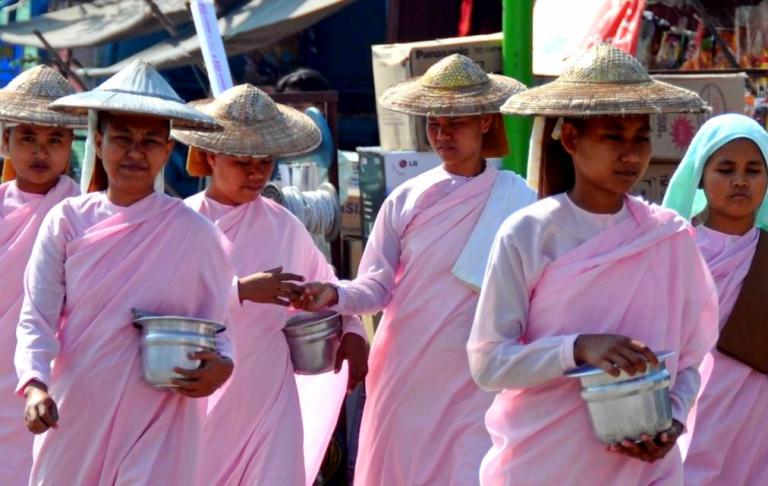
Click on any image for a slightly larger version. All can be freely used (with attribution please). And all are from Mandalay, Burma (January 25, 2011).
Read more:
The Position of Women in Buddhism (accesstoinsight)
Sakhyadhita, the International Organization of Buddhist Women
Therigatha: the Poems of the Elder Nuns (accesstoinsight)

